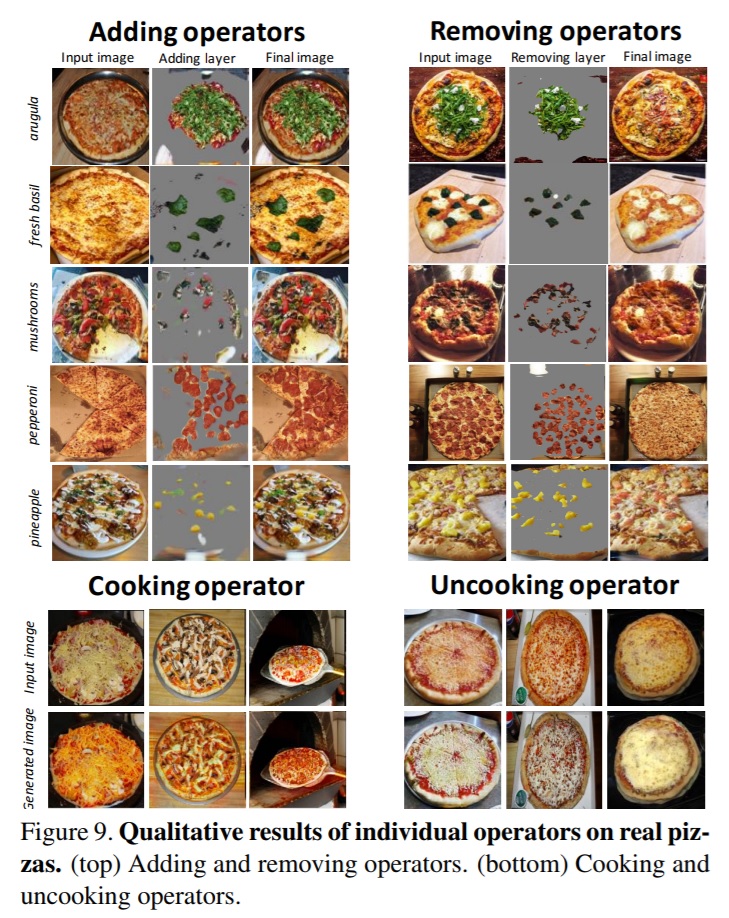PizzaGAN, the newest neural network from the geniuses at MIT’s Computer Science and Artificial Intelligence Laboratory (CSAIL) and the Qatar Computing Research Institute (QCRI), is a generative adversarial network that creates images of pizza both before and after it’s been cooked. Credit: MIT CSAIL No, it doesn’t actually make a pizza that you can eat – at least, not yet. When we hear about robots replacing humans in the food industry we might imagine a Boston Dynamics machine walking around a kitchen flipping burgers, making fries, and yelling “order up,” but the truth is far more tame. What MIT and QCRI have done is create a neural network that can look at an image of a pizza, determine the type and distribution of ingredients, and figure out the correct order to layer the pizza before cooking. It understands – as much as any AI understands anything – what making a pizza should look like from start to finish. The joint team accomplished this through a novel modular approach. It developed the AI with the ability to visualize what a pizza should look like based on whether ingredients have been added or removed. You can show it an image of a pizza with the works, for example, and then ask it to remove mushrooms and onions and it’ll generate an image of the modified pie. According to the researchers: In order for a robot or machine to one day make a pizza in the real world, it’ll have to understand what a pizza is. And so far humans, even the really smart ones at CSAIL and QCRI, are way better at replicating vision in robots than taste buds. Domino’s pizza, for example, is currently testing a computer vision solution to quality control. It’s using AI in some locations to monitor every pizza coming out of the ovens to determine if they look good enough to meet the company’s standard. Things like topping distribution, even cooking, and roundness can be measured and quantified by machine learning in real-time to ensure customers don’t get a crappy pie. MIT and QCRI’s solution integrates the pre-cooking phase and determines the proper layering to make a tasty, appealing pizza. At least in theory – we could be years away from an end-to-end AI-powered solution for preparing, cooking, and serving pizza. Of course, pizza isn’t the only thing that a robot could make once it understands the nuances of ingredients, instructions, and how the end-result of a project should appear. The researchers concluded the underlying AI models behind PizzaGAN could be useful in other domains: But, let’s be honest, we won’t officially enter the AI era until the day arrives that we can get a decent brick-oven Margherita pizza made to-order by a self-contained robot. H/t: George Sief, Towards Data Science.
